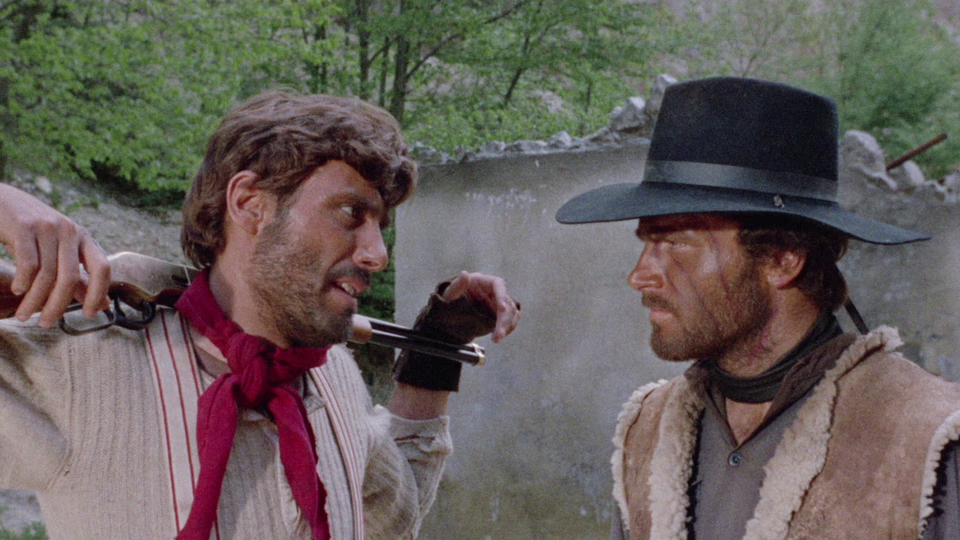Massacre Time

Lucio Fulci’s Massacre Time opens with a mounted hunting party pursuing a fleeing man across rugged terrain. Not for justice or bounty, but for sport. It’s a striking image that announces both Fulci’s cynical worldview and his eye for visual storytelling.
But the somersault pulled me right out. More on that later.
Franco Nero rides into town as a prospector summoned home by cryptic word. He finds his family ranch sold. His brother, played by George Hilton, has turned lush and lives in a hovel. The town cowers under the boot of a land baron and his psychotic son, Junior, played by Nino Castelnuovo. So far, so familiar.
But Fulci has tricks up his sleeve. Nero starts channeling Clint Eastwood’s steely “Man with No Name” stranger, all squints and swagger. Then he marches into Scott’s ranch for the obligatory showdown and gets his hide tanned.
It’s a clever subversion. Nero’s performance shifts from Eastwood to Bill Holden, wounded and human. This opens space for Hilton to steal scenes with his crackling physical charisma. The brothers become equals rather than hero and sidekick.
Fulci announces his visual genius from frame one. Junior leading the hunting party, his face twisted in psychotic glee. Fulci cuts between menacing close-ups and sweeping wide shots that make the landscape a character. Blood flows freely—from split lips, whip marks, bullet holes. The future “godfather of gore” plants his flag here.
But the script stumbles with its parade of disposable characters. Fulci introduces hapless victims only to slaughter them minutes later. It’s meant to establish Junior as a monster, but Castelnuovo already radiates creepy intensity with his tilted head and unbalanced stare. The shortcut cheapens the impact.
The film’s visual peak comes in a masterful shot that frames the two brothers through a window as they prepare for battle. It’s a moment that captures both their newfound unity and the film’s transition from character study to conventional Western showdown. Fulci proves he can handle intimate drama as skillfully as he stages action.
Then comes the somersault.
During the climactic ranch raid, Nero rides a wagon down a ramp, guns blazing toward goons behind an overturned table. The wagon strikes. Fulci cuts to a low-angle shot of Nero somersaulting through the air with the grace of an Olympic gymnast and the plausibility of an 80s Cannon ninja picture.
I laughed out loud. Not with the film, but at it.
That moment yanked me from Fulci’s carefully constructed world. All his visual poetry couldn’t survive one ridiculous gymnastic flourish. Massacre Time builds toward greatness, then stumbles at the finish line.